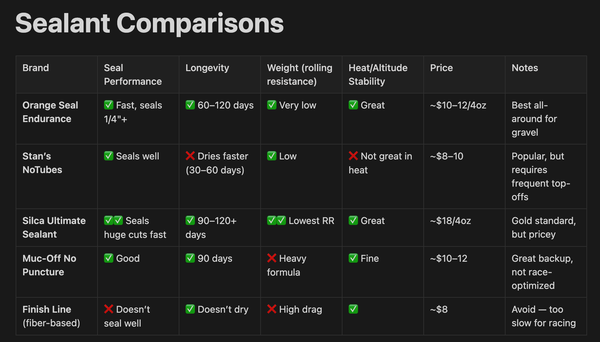The Rinse-and-Repeat Randy Mistake™: How Dirty Water Bottles Can Wreck More Than Just Your Ride
Abstract
Cyclists are known for obsessing over watts, tire pressure, and shaving grams from their gear. Yet many treat an equally important piece of equipment—their water bottle—with shocking neglect. This essay explores the hygiene risks associated with poorly cleaned cycling bottles, framed around a common but costly error: The Rinse-and-Repeat Randy Mistake™. By highlighting research on bacterial contamination, infection risks, and proper cleaning technique, this humorous yet data-driven guide reveals how something as routine as “a quick rinse” can turn race prep into a recipe for gut-wrenching regret.
Introduction: A Not-So-Clean Start
Meet “Randy.” Strong quads, podium hopes, years of dedication—and one very bad habit. After each ride, Randy would give his water bottle a lazy half-rinse, shake out the leftovers, and toss it right back into his gear bag. No soap, no scrubbing, no judgment—until the morning of his A-race, when Randy was sidelined by explosive gastrointestinal distress and utterly humiliated. His spotless racing kit? Tragically overshadowed by a not-so-spotless GI emergency.
What happened was no mystery. Randy had fallen victim to a hazard faced by countless athletes: The Rinse-and-Repeat Randy Mistake™—the misguided belief that a quick rinse is enough to keep a reusable water bottle safe. It isn’t, and the research confirms it.
What’s Lurking in That Bottle?
Reusable water bottles, particularly those used by endurance athletes, are ideal petri dishes for bacteria, even when rinsed between uses. A study published in Food Protection Trends found that more than 20% of bottles in daily use contained coliform bacteria—indicators of fecal contamination (Food Protection Trends, 2017).
In an analysis of bottle materials, researchers discovered that plastic bottles showed significantly higher microbial growth than stainless steel or glass. PET bottles—the most common type used by cyclists—had an average bacterial count of 68.8 ± 19.1 cfu/ml compared to just 35.4 ± 8 cfu/ml for metal bottles (PubMed, 2024). Soaking that bottle cap in sports drink and leaving it to dry in your gym bag is like setting up a five-star buffet for microbes.
If that’s not convincing, a 2024 study by WaterFilterGuru.com revealed that water bottles used daily were home to:
- 14 times more bacteria than a dog bowl
- 5 times more than a computer mouse
- 40,000 times more than a toilet seat (CBS News, 2024)
Cyclists and Contamination: A Dangerous Duo
Cyclists are uniquely prone to this hygiene hazard due to environmental exposure (mud, sweat, road spray), sugar-rich beverages (ideal for bacterial growth), and bottle designs with nooks and crannies that are tough to clean. Add in the fact that bottles are almost always stored hot and damp in gear bags or cars, and you’ve got a cocktail for contamination.
Even a short period of warmth and humidity can spark bacterial growth. Bacteria can double every 20 minutes in ideal conditions (CBS News, 2024). A slightly damp, sugar-coated bottle left unwashed overnight? Microbial Mardi Gras.
The Real-World Impact: Not Just Gross – Dangerous
When cyclists like Randy fall into The Rinse-and-Repeat Randy Mistake™, they risk more than unpleasant tastes or odors—they open the door to infection. Studies show that high bacterial loads in improperly cleaned bottles can lead to foodborne illness-like symptoms: stomach cramps, diarrhea, nausea, and vomiting (Edwards et al., 2021).
One cyclist missing a race is a setback; but consistent exposure to harmful bacteria can lead to longer-term gut issues, especially in athletes with compromised immune systems from intense training.
How to Avoid Randy’s Fate: Clean Like a Pro
Science offers clear, effective steps for bottle hygiene:
Daily Cleaning
- Fully disassemble the bottle—including nozzle, cap, and straw, if included.
- Use hot, soapy water and a bottle brush, especially around seals and drinking mechanisms.
- Let dry completely with the cap off. Leaving bottles capped traps moisture and fosters growth.
Weekly Sanitization
- Dishwasher-safe bottles should go through a hot cycle weekly.
- Otherwise, sanitize using a vinegar-water solution or a hot water soak at 160°F (71°C) for 30 seconds.
Material Matters
- Stainless steel and glass bottles show much lower bacterial loads after use and cleaning (Food Protection Trends, 2017).
- While plastic is lightweight and convenient, it demands stricter cleaning—or better yet, occasional replacement.
Conclusion
Like tire wear or chain stretch, bottle hygiene is one of those unsexy maintenance details that make all the difference. Ignoring it invites bacteria into your system—with potentially race-ending consequences. While The Rinse-and-Repeat Randy Mistake™ might sound like a silly cautionary tale, the research makes it clear: casual cleaning habits can lead to serious setbacks.
Cyclists focused on marginal gains need to start including bottle sanitation in their performance checklist. After all, the only thing worse than losing a race is missing it entirely—because of your water bottle.
References
CBS News. (2024, September 10). Reusable water bottles have more bacteria on them than dog bowls. https://www.cbsnews.com/minnesota/news/reusable-water-bottle-cleaning/
Edwards, L., Betts, J., & Gonzalez, J. (2021). Gastrointestinal function and microbiota in endurance athletes. Frontiers in Physiology, 16(1551284).
Food Protection Trends. (2017, November). The cleanliness of reusable water bottles: How contamination levels are affected by bottle usage and cleaning behaviors of bottle owners. https://www.foodprotection.org/publications/food-protection-trends/archive/2017-11-the-cleanliness-of-reusable-water-bottles-how-contamination-levels-are-affected-by-bottle-us/
PubMed. (2024, April 29). Daily use water bottles as a hub for microbial population. https://pubmed.ncbi.nlm.nih.gov/38882863/
Reddit. (2023, September 16). How long do water borne illnesses last in dry water bottles? https://www.reddit.com/r/Ultralight/comments/16k69wv/how_long_do_water_borne_illnesses_last_in_dry/
We Love Cycling. (2025, May 6). The dirty truth about your cycling bottle: What's really inside? https://www.welovecycling.com/wide/2025/05/06/the-dirty-truth-about-your-cycling-bottle-whats-really-inside/



